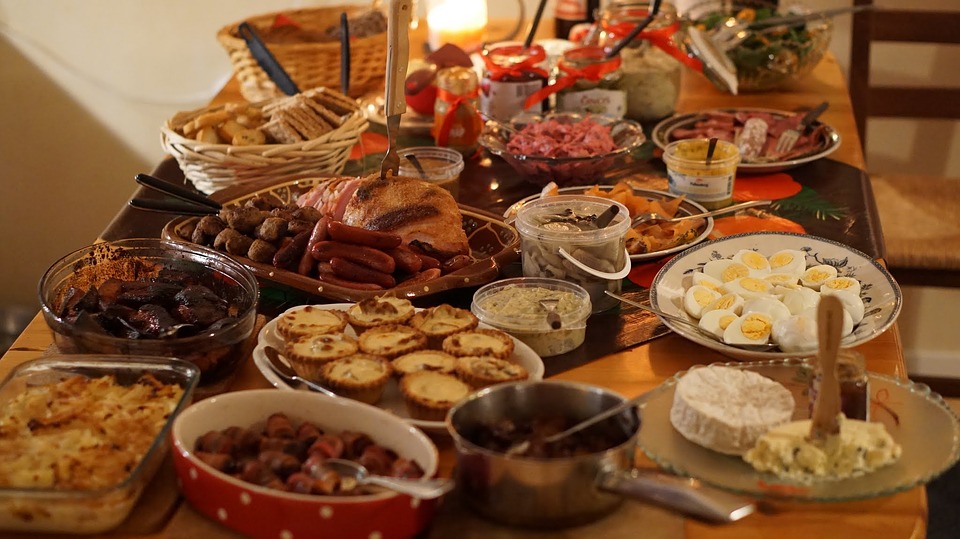Millions of Americans are preparing to gather family and friends around the dinner table to give thanks. For those preparing the meal – often the largest meal cooked all year – it can be a stressful time. Prevent a foodborne illness from spreading around the table with these six tips for a food safe Thanksgiving:
Tip 1: Don’t rinse the turkey.
Over two-thirds of the public – 68 percent – washes the whole turkey before cooking it, according to the Food and Drug Administration (FDA). Unfortunately, this only spreads pathogens onto kitchen surfaces. In fact, washing raw meat and poultry can cause bacteria to spread up to three feet away. Cooking (e.g., baking, broiling, frying, or grilling) meat and poultry to the right temperature kills any bacteria that may be present, so washing meat and poultry is not necessary.
Tip 2: Store turkeys in the freezer.
Immediately after checking out at the grocery store frozen turkeys should be brought home and stored in the freezer. Frozen turkeys should not be left on the back porch, in the car trunk, in the basement, or anywhere else where temperatures cannot be constantly monitored. Storing food outside is not safe for two reasons. First, animals can get into food stored outside, consuming it or contaminating it. The second is temperature variation. Just like your car heats up during the summer, a plastic food storage container left in the sun can heat up and climb into the danger zone (above 40°F).
Tip 3: Thaw the turkey safely.
A package of frozen meat or poultry left thawing on the counter for more than two hours is not at a safe temperature. While the center of the package may still be frozen, the outer layer remains in the “danger zone” between 40°F and 140°F, a temperature where foodborne bacteria multiply rapidly. There are three safe ways to thaw food: in the refrigerator, in cold water, and in the microwave.
Refrigerator Thawing
Make sure to plan ahead and allow 24 hours for each four to five pounds in a refrigerator. Place the turkey in a container to prevent the juices from dripping on other foods. The thawing times for a whole turkey are approximately:
- 4 to 12 pounds — 1 to 3 days
- 12 to 16 pounds — 3 to 4 days
- 16 to 20 pounds — 4 to 5 days
- 20 to 24 pounds — 5 to 6 days
Cold Water Thawing
Be sure the turkey is in a leak-proof plastic bag to prevent cross-contamination and to prevent the turkey from absorbing water, which may result in a watery product. Allow nearly 30 minutes per pound. Submerge the wrapped turkey in cold tap water. Change the water every 30 minutes until the turkey is thawed. Cook the turkey immediately after it is thawed. The thawing times for a whole turkey are:
- 4 to 12 pounds — 2 to 6 hours
- 12 to 16 pounds — 6 to 8 hours
- 16 to 20 pounds — 8 to 10 hours
- 20 to 24 pounds — 10 to 12 hours
Microwave Thawing
Follow the microwave oven manufacturer’s instructions when defrosting a turkey. Cook it immediately after thawing because some of the food may become warm and begin to cook during microwaving. Holding partially cooking food is not recommended by the USDA because any bacteria present wouldn’t have been destroyed.
Tip 4: Prevent cross-contamination.
Wash hands with warm water and soap for 20 seconds before touching any food to prevent the spread of infection and illness. Keep raw turkey separated from other foods at all times. When handling raw turkey, use separate cutting boards, plates, and utensils to avoid cross-contamination. Wash items that have touched raw meat with warm water and soap, or place them in a dishwasher.
The only way to determine if a turkey is cooked to a safe internal temperature is with a food thermometer. Check the turkey’s temperature by inserting the thermometer into three places: the thickest part of the breast, the innermost part of the thigh, and the innermost part of the wing. Your thermometer should register 165 °F in all three of these places. The juices rarely run clear at this temperature, and when they do the bird is often overcooked. Using the food thermometer is the best way to ensure your turkey is cooked, but not overdone.
Tip 6: Keep leftovers for up to four days.
Refrigerate leftovers within two hours of the turkey coming out of the oven to prevent bacteria from growing on the food. Store leftovers in shallow pans or containers to decrease cooling time which prevents the food from spending too much time at unsafe temperatures (between 40°F and 140°F). Remove the stuffing, and refrigerate the stuffing and meat separately. If you’re planning on consuming leftovers beyond three or four days, use the freezer for longer periods of time. And if the food is traveling home with a guest who lives more than two hours away, keep the leftovers in a cooler with ice or frozen gelpacks.


